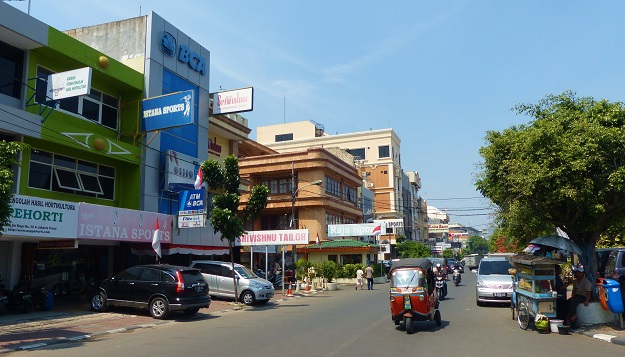Indonesian Cities: Some Interesting Facts about Jakarta
Jakarta is the capital city of Indonesia and center of the country's politics and business. It is therefore also the most populous city within the Archipelago, and the local population is expanding at a rather fast rate because many people from the rural areas or smaller cities migrate to this mega-city in search of livelihood. The earliest known settlement in the area we now know as Jakarta was built about 400 AD (Sunda Kelapa). However, the Dutch would establish a new (and modern) power in this region in 1619 that would become the center of colonial politics.
Recently it has been reported in media, again, whether or not the central Indonesian government needs to exit Jakarta in order to reduce severe congestion in the mega-city. Currently, Jakarta acts as capital city and center of politics, business and markets. This has attracted the influx of millions of people over past decades. Besides people, property development and the number of cars and motorcycles surged accordingly, putting pressure on infrastructure. But with limited available land (for new infrastructure and property development), while the population and vehicle/motorcycle ownership continues to rise it created major problems in terms of traffic, water management, residential matters, healthcare and more.
Facts about Jakarta:
- The land size of Jakarta is 662.3 square kilometers, equivalent to only 0.035 percent of Indonesia's total size.
- During daytime there are 11.2 million people living and or working in Jakarta. Interestingly enough, during nighttime the figure falls to 10.2 million. This implies that about 1.2 million people travel to Jakarta in the morning (for their daily work). In the late afternoon or early evening, these people travel back to the regions around Jakarta. Hence, Jakarta's traffic in the morning and afternoon is a great challenge.
- Although in terms of land size Jakarta only constitutes 0.035 percent of the whole Indonesian nation, the population of Jakarta represents 4 percent of the whole Indonesian population. As such, on average, there live 15,367 Jakartans on every square kilometer, a staggering density.

- The total length of existing roads in Jakarta is 6,956 kilometer. However, this is barely enough to cater the nearly 19 million motorized vehicles (75 percent of which are motorcycles). Problematically, many - if not most - of the existing roads are in poor condition, hence exacerbating traffic congestion.
- If all vehicles in Jakarta would be parked in one line, then the line would stretch across 45,356 kilometers, more than 6.5 times the total length of Jakarta's existing road network. Moreover, the pace of motorized vehicle growth in Jakarta is 8.75 percent per year, while the expansion of the road network is much slower.
- Only 2.43 percent of Jakarta consists of public recreational green zones, far from the ideal 30 percent. This also implies Jakarta is not very child-friendly. Perhaps the most popular public place for outdoor recreation and to play football, have a pick-nick and relax is the wide square around Monas in Central Jakarta.
- Jakarta's workforce numbered 5.5 million people in February 2017. Meanwhile, the local unemployment rate stands at 5.36 percent, slightly below the overall unemployment rate of Indonesia (5.61 percent).
- The local economy of Jakarta grew 6.48 percent year-on-year (y/y) in the first quarter of 2017, significantly higher than the 5.01 percent GDP growth rate of Indonesia.
- Direct investment realization (both foreign and domestic direct investment) in Jakarta reached IDR 24.2 trillion (approx. USD $1.8 billion) in Q1-2017, contributing 14.6 percent to total direct investment in Indonesia in that quarter.
- Officially, there are 1,410 big and medium-sized companies based in Jakarta, while there are 16,454 small companies registered in this mega-city. However, there exists a big informal sector.
- About 3.8 percent of the Jakartan population - roughly 390,000 people in absolute terms - lives below the local poverty line. This is almost three times below the national poverty rate (10.6 percent), hence it is attractive to migrate to Jakarta to improve one's living conditions.
